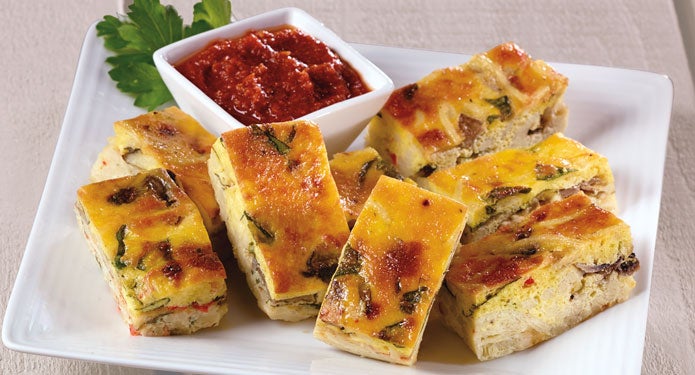Handheld menu options can help encourage eating independence for people with diminished fine motor skills.
Minding our manners at the table is often one of the first things we are taught as children, followed closely by how to use utensils and set the table.
So what happens when we age and begin to lose the fine motor skills it takes to feed ourselves? What if we are living in an assisted residential community and are expected to dine with our neighbours, but are too embarrassed, because we can no longer twist spaghetti with a fork and lift it to our mouth? Or what about those residents who suffer from dementia who no longer know where to place the napkin or what to do with a spoon?
Use finger foods to improve outcomes
More often than not, residents with these eating impairments stop going to the dining room, and consequently, their food consumption declines. This reduced intake can create a domino of adverse health effects, including weight loss, infection and delayed wound healing, in a population already at nutritional risk. They also miss out on connecting with their friends during mealtime, putting their social skills at risk for decline. These negative consequences are not only devastating for residents, but they also can adversely impact their community, as they may result in lower reimbursements, a financial outcome that isn’t good for anyone.
Setting aside the silverware and introducing finger foods can be an easy way to help residents with memory deficits maintain eating independently and preserve your reimbursements. Finger foods are especially beneficial, as those with dementia can easily get overwhelmed with large meals, are regularly distracted and often wander. Portable, bite-sized or handheld foods allow these residents to grab what they want, feed themselves and continue to walk around, if they so choose. They also provide residents with a more dignified way to eat if using utensils proves too difficult.
Reenvision favourites
Although a basic sandwich will often suffice, there are other, more palate-pleasing options that can easily be created. The flavour profiles and nutritionals of popular “knife and fork” dishes, with a little creativity, can often be converted to a portable iteration. Here are a few ideas, by meal to get you started:
Déjeuners
- Breakfast Sandwiches: Use a variety of breads to make breakfast sandwiches. English muffins and croissants are nice alternatives. Switch up the flavour by alternating the type of meat, cheese and eggs.
- Egg and Cheese Muffin Cup: Using muffin tins, biscuit mix, eggs and a variety of different fillings like sausage, spinach and cheddar cheese, the muffin becomes a movable, hand-held omelet.
Lunch and Dinner
- Turkey Quinoa Meatloaf Muffins: Bake your turkey meatloaf in muffin tins for a hand-held take on a family favourite.
- Empanadas: Traditionally from Latin America, empanadas pack a lot of flavour into a small pastry. Just grab some pre-made pie crust and fill them with diced veggies and chopped meat and you’ve got a great on-the-go meal.
Dessert and Snacks
- Pudding parfait cones
- Cake pops
- Homemade ice cream sandwiches
- Smoothies
Providing residents with easy, handheld meals and snacks is an excellent way to meet their changing needs while maximizing your kitchen staff’s creativity. Challenge your chefs to present food in ways that residents with memory or fine motor skill deficits can enjoy in a dignified manner. Your cooks will have fun, your residents will thrive and eating will once again become an enjoyable experience for everyone at the table.










